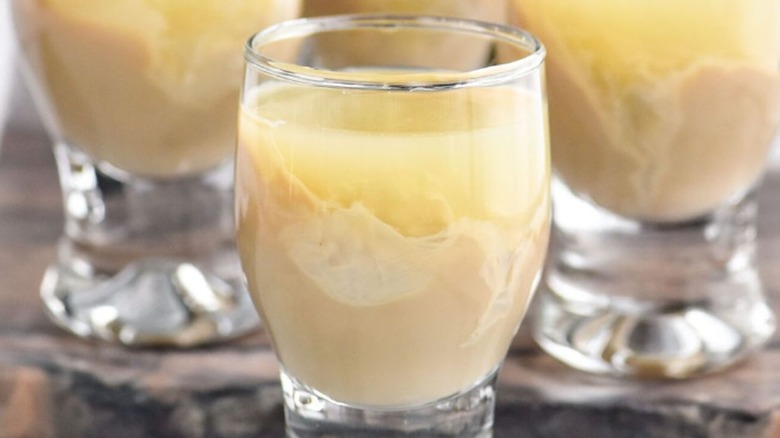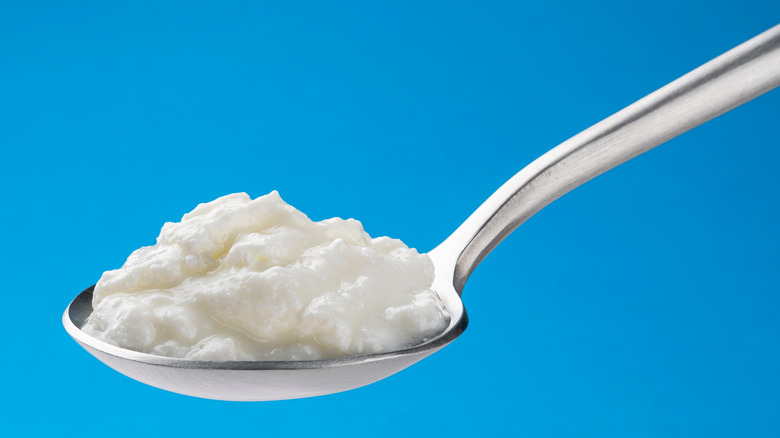The Chemical Reaction That Makes Cement Mixer Shots So Thick
When you're thinking of fun alcoholic drinks to serve at your next get together, the qualities of thick, creamy, and sour probably aren't the first ones that come to mind. But these three descriptors make up the popular shot known as the cement mixer. The cement mixer is an infamous shot, perfect for pranking a friend. If you've tried one, you're familiar with its curdling texture and opposing flavors, but for those lucky enough to never have had the misfortune of trying a cement mixer you're probably wondering what the big fuss is about.
A cement mixer features only two ingredients: Irish cream liqueur and lime juice. Lime juice is floated on top of the liqueur, and when the two ingredients mix in the mouth a chemical reaction occurs, curdling the cream liqueur and leaving a stomach-churning shot. What's actually happening is a change in the pH levels of the dairy triggering a scientific process known as protein denaturing. This unfolding of the proteins allows them to form into chunks, similar to the texture you'd find in buttermilk or cottage cheese. It's the acid from the lime juice that triggers this reaction and leaves you with a thick, clumpy texture. To get the authentic experience it's important to make sure the ingredients don't interact until the shot is in your mouth.
How we use protein denaturing in everyday cooking
You could use the same process to make a buttermilk substitute by adding lemon juice to regular milk. Buttermilk has a lower pH than regular milk and is a fermented milk drink. So if you've ever used buttermilk for pancakes you'll surely have noticed it has a sour smell and the texture resembles spoiled milk. Buttermilk is a popular ingredient in different baked goods such as biscuits, pancakes, and muffins for a variety of reasons. The acidity of buttermilk activates baking soda and acts as a leavening agent. This is why buttermilk pancakes are so fluffy. Buttermilk also balances the sweetness in these dishes and brings a light, tangy flavor.
Curds and whey are another by-product of this acid and milk reaction and serve as the first step for making cheese. Curds refer to the proteins from dairy that clump together, and whey is the liquid that remains. The curds are typically separated from the whey to be washed and formed into cheeses. Cottage cheese is the closest thing we have to traditional curds and whey today but is processed more for better flavor and a more appetizing texture. Because cement mixer shots are unprocessed and consumed at the same time as the curdling reaction, the flavor and texture of them are usually quite shocking to the palate.

